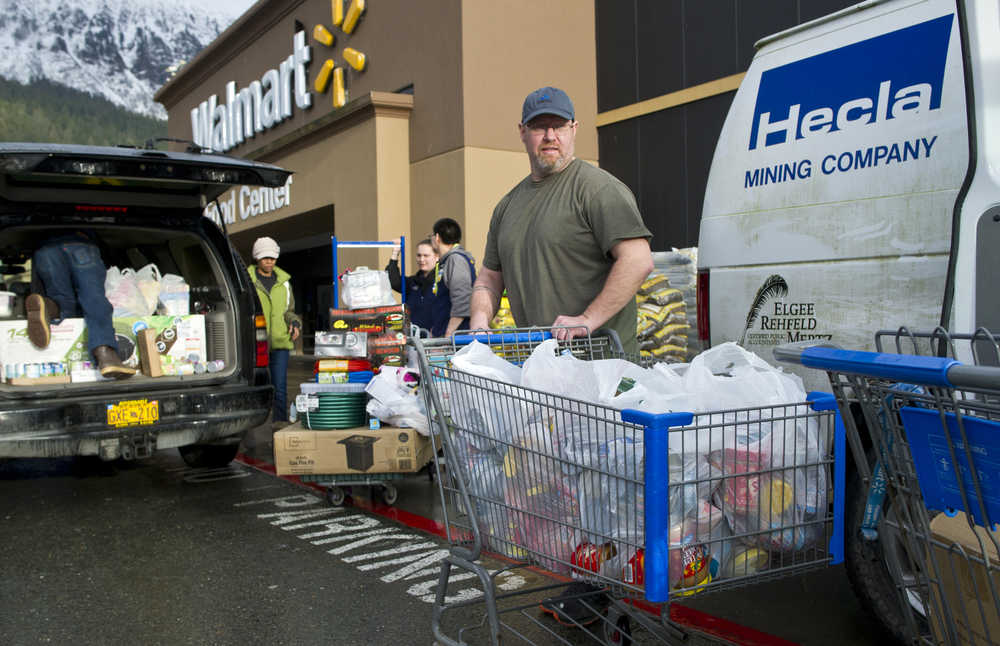Few people, if any, took advantage of Walmart’s going-out-of-business sale like Southeast Alaska Food Bank manager Darren Adams.
On Friday, he spent about $2,600 on food for the bank. That amount of money goes a long way when everything in the store is half off, and Adams has the receipts to prove it. As it turns out, Walmart’s cash registers can only ring up so many items under a single transaction. Adams bought so much food that it took a total of six transactions. Each of Adams six receipts contained hundreds of items, and each was nearly as long as Adams is tall.
Helpful though they may have been, the slashed prices — or rather the reason behind them — cut both ways for the food bank. This sale was far from reason to celebrate.
“This will tide us over for a little bit,” Adams said smiling as he held up the receipts in the Walmart parking lot. His smile quickly faded as he finished his thought, receipts still dancing in the wind. “Losing Walmart is definitely going to hurt us.”
That’s because Walmart donated roughly 9 percent of the total 269,000 pounds of food the bank received last year. That’s about 23,000 pounds. To put that in perspective, that’s about four Asian elephants or three orca whales worth of food.
Worse still than losing the amount of food Walmart donated is losing the type of food it donated, Adams said. Walmart was one of the food bank’s greatest single sources of fresh meat, a critical but rare donation for the bank. Aside from Walmart, Adams said Fred Meyers is the only other store that regularly donates fresh meat, not packaged lunchmeat, on “a regular basis.”
“We get a lot of donations — sour cream, dry foods, canned foods, that type of thing — from other places, but it’s the meat that we get from Walmart and Fred Meyers (to a certain extent) that allows people to take that other food and make a meal,” he said. “The food Walmart has given us over the years has helped us to offer people a more balanced diet.”
By his best guess, Adams figures that the food he bought Friday will help the food bank through the next couple of months, past Walmart’s Feb. 4 closing date. But that estimate could be subject to change. Nobody knows the extent to which Walmart’s decision to close its Juneau location will impact the city or the 168 people who will lose their jobs as a result.
Juneau Economic Development Council Director Brian Holst and City Finance Director Bob Bartholomew are both working to determine what the closure will mean for the city and the workers left without jobs.
“Several impacts are important, but I think the most important is to the 168 people who worked at Walmart,” Holst told the Juneau Chamber of Commerce on Thursday.
And Adams is concerned about those employees, too.
“The problem this creates is that on one hand, we’re losing food donations. But because we have 150 to 180 employees being displaced who might need our services, this is going to hurt us in two ways,” Adams said.
The food bank is accepting donations from the community.

